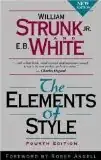I'm the odd kind of developer that likes writing and explaining - emails, specs, you name it. I enjoy helping people understand things deeply. I hate ping-pong communications where groups go through 30 or 40 emails, phone calls and meetings because 25% of the group misunderstood the previous dashed-off email in which the writer only half-explained their position, or was in a hurry and miswrote a critical word or left out a negative or two.
This trait is great for documentation, but my emails are long, so people simply don't read them. A couple strategies I've used are formatting long emails as attached Word documents to encourage people to view them as documentation (works surprisingly well sometimes), or trying to use more bullet points instead of free paragraphs. These strategies increase readership, but the content is still long.
Of course I want to yell and scream that complex technical topics require a lot of exposition and clarification, but that doesn't help anyone. Obviously there are tradeoffs that can be made, but I have a hard time justifying making statements that aren't clear or that will result in a million questions, misunderstandings, or added "terms and conditions" later on.
How do you keep your communications short but complete?
